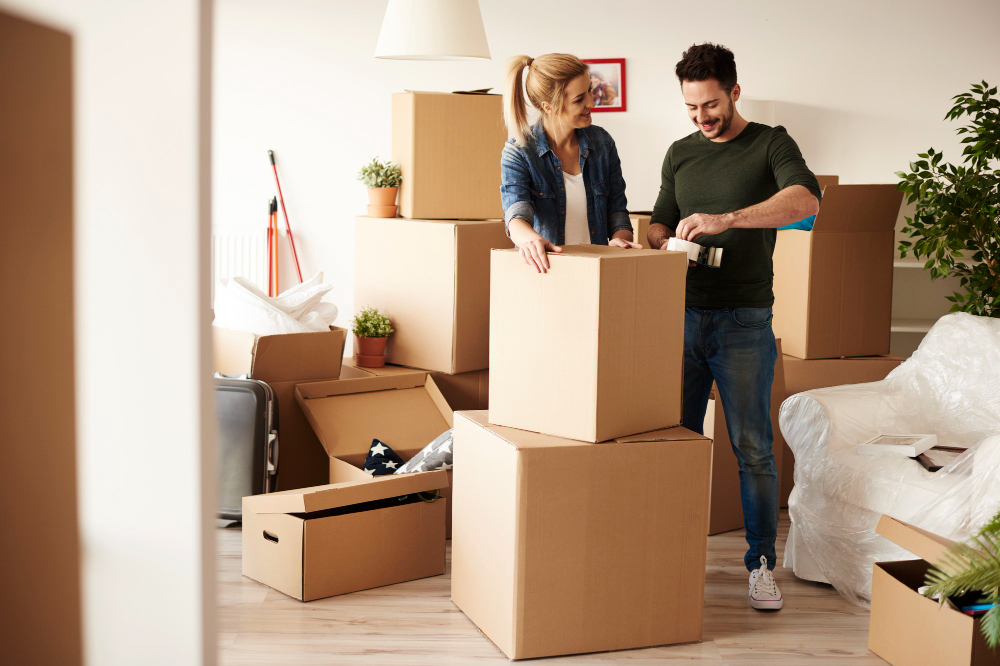The Ultimate Guide to Efficiently Packing for a Stress Free Move

Springtime brings not only the blooming of flowers but also a surge in home moving plans, as the warmer weather and longer days provide the ideal conditions for house hunting. With more buyers opting to move during this season than any other, the need for efficient packing tips grows. Whether you’re a chaotic shover, hastily stuffing belongings into boxes, or a meticulous label maker aficionado, carefully organising every item, this guide aims to equip you with the top packing tips for a seamless transition to your new abode.
1. Planning Ahead: The Key to Success
Assessing Your Inventory
Before diving into packing, take stock of your belongings. Decide what to keep, donate, or discard. This preliminary step not only declutters your space but also streamlines the packing process.
Creating a Timeline
Moving can be overwhelming, but a well-structured timeline can alleviate stress. Set deadlines for each packing phase, allowing ample time to complete tasks without last-minute rushes.
2. Essential Packing Supplies
Quality Moving Boxes
Invest in sturdy, uniform-sized boxes for moving house to optimise space utilisation and ensure safe transport. Acquire various sizes to accommodate diverse items, from delicate china to bulky bedding.
Packing Tape and Bubble Wrap
Secure boxes with robust packing tape to prevent spills and tears during transit. Additionally, wrap fragile items in bubble wrap or packing paper to cushion against impact.
Labelling Materials
Embrace the power of labelling to help you when it comes to unpacking. Use markers, colour-coded stickers, or label makers to categorise boxes by room or contents.
3. Strategic Packing Strategies
Room-by-Room Approach
Divide your home into manageable sections and pack one room at a time. This systematic approach minimises chaos and ensures items that live in the same space remain together.
Heavy Items at the Bottom
When loading boxes, place heavier items at the bottom and lighter ones on top. This distribution maintains box stability and reduces the risk of damage to fragile objects.
Utilise Vertical Space
Maximise storage capacity by filling boxes to the brim and utilising vertical space. Pack vertically with books or linens to prevent items from shifting during transit.
4. Safeguarding Fragile Items
Wrap Breakables Carefully
Delicate items like glassware and ceramics require extra protection. Wrap each piece individually in packing paper or bubble wrap, and cushion the box’s bottom and sides with soft materials like towels or clothing.
Use Specialty Boxes
For exceptionally fragile items such as mirrors or artwork, buy cardboard boxes designed to provide optimal protection. These boxes typically feature reinforced corners and adjustable sizing options.
Fragile Stickers
Clearly mark boxes containing delicate items with “Fragile” stickers. This alerts movers to handle them with extra care and ensures they’re placed on top of heavier boxes during loading.
5. Packing Electronics and Valuables
Backup Data
Prior to disconnecting electronics, back up crucial data to safeguard against potential loss or damage. Use cloud storage or external hard drives to store important files securely.
Original Packaging
Whenever possible, repack electronics like TVs or computers in their original boxes. If unavailable, invest in foam padding or specialised electronic boxes to protect delicate components.
Transport Valuables Personally
Irreplaceable items such as jewellery or important documents should be transported personally rather than entrusted to movers. Keep them in a secure bag or box within reach during the move.
6. Streamlining Unpacking
Essentials Box
Pack a separate box containing essentials for the first day in your new home. Include toiletries, a change of clothes, bedding, and kitchen basics to ease the transition without rummaging through numerous boxes.
Unpack Strategically
Start unpacking with essential rooms like the kitchen and bedrooms, then gradually move to less vital spaces. Unpack one room at a time, focusing on completing each before moving to the next.
Dispose of Packing Materials
Dispose of packing materials responsibly to avoid clutter in your new home. Recycle cardboard boxes, and consider donating gently used packing supplies to others that may be moving house soon.
7. Seek Professional Assistance if Needed
Professional Movers
If the thought of packing overwhelms you, consider hiring professional movers. They can handle packing, loading, and unloading with efficiency, allowing you to focus on other aspects of the move.
Packing Services
Some moving companies offer packing services as part of their package. Opting for this convenience ensures expert handling of your belongings, minimising the risk of damage during transit.
A stress-free move begins with efficient packing strategies and meticulous planning. By following the tips outlined in this guide, you can streamline the packing process, safeguard your belongings, and move seamlessly to your new home. Whether you’re a methodical planner or a spontaneous packer, adopting these techniques will help to achieve a smooth and enjoyable moving experience.


